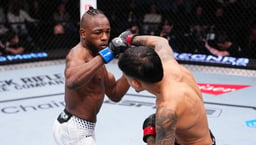
Issue 123
December 2014
Pride Fighting Championships is still special to MMA fans around the world because it created a big movement, almost a revolution, in the fight sports industry. Not just in the Japanese fight industry, but the entire world. Pride wasn’t just a simple sports competition, it was a fighting event with great production and exciting bouts.
ANTONIO INOKI
The Japanese MMA pioneer reviews the enduring popularity and impact of Pride
My role in the promotion was to come up with inspirational initiatives to help attract fans to the fight cards. I helped Pride with this by coming up with ideas that would gain them more publicity and help them promote their events. Sometimes in life things can’t be ordinary, they needed to surprise fans.
People still ask me what were my best memories of Pride or who was my favorite fighter, but I don’t have an honest answer. I don’t have a specific favorite memory because all my memories are great and there were simply too many great fighters in the promotion over the years. It’s impossible to decide which one was my favorite.
One of the most important things about Pride was the matchmaking because the fans knew who the professional wrestlers were and so the matchmaking needed to be easy to understand. The fights caught the attention of fans which is what made it popular.
Fans would be asking the question, ‘What will happen when this wrestler and this fighter face each other?’ And it was the curiosity of the matchmaking that made it more exciting and popular. Then it was the differing styles and backgrounds of the martial artists and fighters involved that excited people.
The other thing that appealed to Pride fans was they were curious to see who was the best. They wanted to know who had the speed, athleticism, power and skills to come out as the victor.
What would happen if a big guy with power in his hands fought a small guy who had the speed to evade those attacks? Who would win? People are always going to be curious regardless of the culture or the nationality, and that’s what Pride and ultimately MMA gave to those people.
It’s actually taken more time than I first imagined for people to understand MMA in the USA, Japan, and other countries too. Back when I had my first fight against Muhammad Ali nobody understood it at first and it wasn’t widely accepted. As the years have gone by, people slowly began to understand mixed martial arts and that’s why it’s appreciated so much more today.
That’s why it’s important for the Japanese MMA scene that I promote large scale MMA fights using my promotion, Inoki Genome Federation, much like Pride did. We want to attract the casual fans or people who are slightly into MMA but aren’t hardcore fans.
If we can’t attract those people then the number of fans will not grow, meaning the fight industry will never increase. I have been promoting fights for over 50 years, from professional wrestling to MMA, so I have always found ways to attract new fans.
LOOK TO THE SKIES
The peak of the mixed martial arts industry – in Japan at least – came when three MMA events were held here on New Year’s Eve in 2003. We should have been able to continue to do that level of events, especially as in this market it’s all about coming up with different ideas and adding more attractions. We could have continued to be as big we were in 2003.
It’s only when things become predictable and fans grow simply satisfied with the results, that’s when things get tough. People get used to to it, they get used to the format and they get bored easily.
One of the greatest moments for me was when I parachuted into the Tokyo National Stadium at Dynamite! 2002. I don’t exactly remember whose idea it was, but I do remember being asked over the phone while I was traveling outside of Japan, ‘Are you afraid of heights?’ To which I replied, ‘No’. I never thought it would be a parachute.
However, jumping off into the middle of the Tokyo night sky at 4,000m was a great view and an unreal experience. And while it’s something I don’t plan on doing again any time soon, I do intend to stage bigger and better New Year’s Eve shows. That’s a Japanese tradition I refuse to let die.
The annual New Year’s Eve Inoki Bom-Ba-Ye will be bigger than ever this year, and I am already planning on making it bigger again at the end of 2015.
Naturally, I also hope to bring more excitement and surprises to all our future events to keep the fans happy.
...









